Fabien Moutarde
CAOR
Improving Consistency in Vehicle Trajectory Prediction Through Preference Optimization
Jul 03, 2025Abstract:Trajectory prediction is an essential step in the pipeline of an autonomous vehicle. Inaccurate or inconsistent predictions regarding the movement of agents in its surroundings lead to poorly planned maneuvers and potentially dangerous situations for the end-user. Current state-of-the-art deep-learning-based trajectory prediction models can achieve excellent accuracy on public datasets. However, when used in more complex, interactive scenarios, they often fail to capture important interdependencies between agents, leading to inconsistent predictions among agents in the traffic scene. Inspired by the efficacy of incorporating human preference into large language models, this work fine-tunes trajectory prediction models in multi-agent settings using preference optimization. By taking as input automatically calculated preference rankings among predicted futures in the fine-tuning process, our experiments--using state-of-the-art models on three separate datasets--show that we are able to significantly improve scene consistency while minimally sacrificing trajectory prediction accuracy and without adding any excess computational requirements at inference time.
DOC-Depth: A novel approach for dense depth ground truth generation
Feb 04, 2025



Abstract:Accurate depth information is essential for many computer vision applications. Yet, no available dataset recording method allows for fully dense accurate depth estimation in a large scale dynamic environment. In this paper, we introduce DOC-Depth, a novel, efficient and easy-to-deploy approach for dense depth generation from any LiDAR sensor. After reconstructing consistent dense 3D environment using LiDAR odometry, we address dynamic objects occlusions automatically thanks to DOC, our state-of-the art dynamic object classification method. Additionally, DOC-Depth is fast and scalable, allowing for the creation of unbounded datasets in terms of size and time. We demonstrate the effectiveness of our approach on the KITTI dataset, improving its density from 16.1% to 71.2% and release this new fully dense depth annotation, to facilitate future research in the domain. We also showcase results using various LiDAR sensors and in multiple environments. All software components are publicly available for the research community.
AVS-Net: Audio-Visual Scale Net for Self-supervised Monocular Metric Depth Estimation
Dec 02, 2024Abstract:Metric depth prediction from monocular videos suffers from bad generalization between datasets and requires supervised depth data for scale-correct training. Self-supervised training using multi-view reconstruction can benefit from large scale natural videos but not provide correct scale, limiting its benefits. Recently, reflecting audible Echoes off objects is investigated for improved depth prediction and was shown to be sufficient to reconstruct objects at scale even without a visual signal. Because Echoes travel at fixed speed, they have the potential to resolve ambiguities in object scale and appearance. However, predicting depth end-to-end from sound and vision cannot benefit from unsupervised depth prediction approaches, which can process large scale data without sound annotation. In this work we show how Echoes can benefit depth prediction in two ways: When learning metric depth learned from supervised data and as supervisory signal for scale-correct self-supervised training. We show how we can improve the predictions of several state-of-the-art approaches and how the method can scale-correct a self-supervised depth approach.
LED: Light Enhanced Depth Estimation at Night
Sep 12, 2024Abstract:Nighttime camera-based depth estimation is a highly challenging task, especially for autonomous driving applications, where accurate depth perception is essential for ensuring safe navigation. We aim to improve the reliability of perception systems at night time, where models trained on daytime data often fail in the absence of precise but costly LiDAR sensors. In this work, we introduce Light Enhanced Depth (LED), a novel cost-effective approach that significantly improves depth estimation in low-light environments by harnessing a pattern projected by high definition headlights available in modern vehicles. LED leads to significant performance boosts across multiple depth-estimation architectures (encoder-decoder, Adabins, DepthFormer) both on synthetic and real datasets. Furthermore, increased performances beyond illuminated areas reveal a holistic enhancement in scene understanding. Finally, we release the Nighttime Synthetic Drive Dataset, a new synthetic and photo-realistic nighttime dataset, which comprises 49,990 comprehensively annotated images.
NeRAF: 3D Scene Infused Neural Radiance and Acoustic Fields
May 28, 2024Abstract:Sound plays a major role in human perception, providing essential scene information alongside vision for understanding our environment. Despite progress in neural implicit representations, learning acoustics that match a visual scene is still challenging. We propose NeRAF, a method that jointly learns acoustic and radiance fields. NeRAF is designed as a Nerfstudio module for convenient access to realistic audio-visual generation. It synthesizes both novel views and spatialized audio at new positions, leveraging radiance field capabilities to condition the acoustic field with 3D scene information. At inference, each modality can be rendered independently and at spatially separated positions, providing greater versatility. We demonstrate the advantages of our method on the SoundSpaces dataset. NeRAF achieves substantial performance improvements over previous works while being more data-efficient. Furthermore, NeRAF enhances novel view synthesis of complex scenes trained with sparse data through cross-modal learning.
Mesoscale Traffic Forecasting for Real-Time Bottleneck and Shockwave Prediction
Feb 08, 2024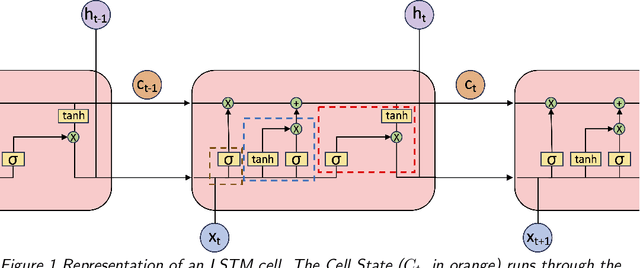
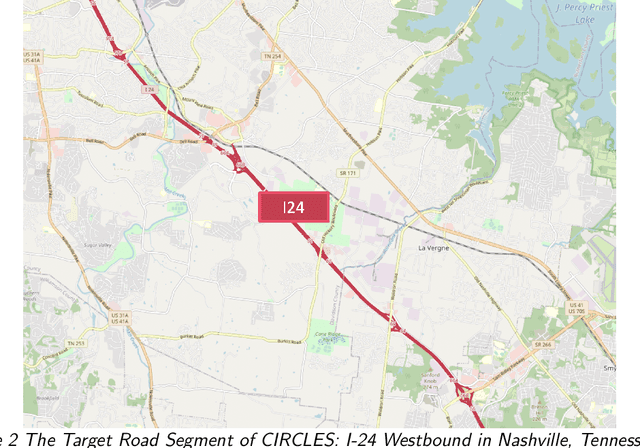

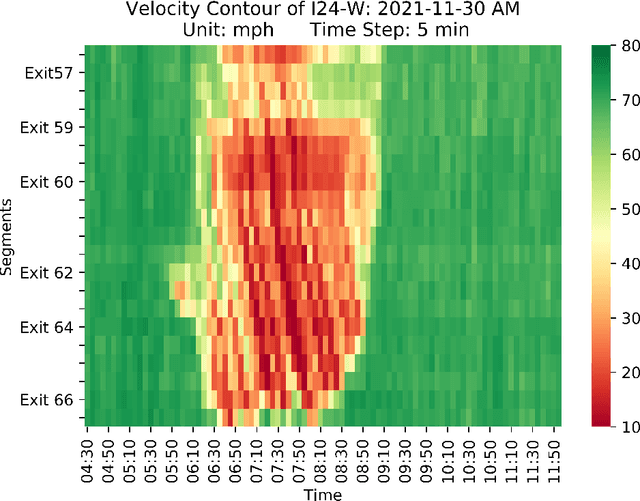
Abstract:Accurate real-time traffic state forecasting plays a pivotal role in traffic control research. In particular, the CIRCLES consortium project necessitates predictive techniques to mitigate the impact of data source delays. After the success of the MegaVanderTest experiment, this paper aims at overcoming the current system limitations and develop a more suited approach to improve the real-time traffic state estimation for the next iterations of the experiment. In this paper, we introduce the SA-LSTM, a deep forecasting method integrating Self-Attention (SA) on the spatial dimension with Long Short-Term Memory (LSTM) yielding state-of-the-art results in real-time mesoscale traffic forecasting. We extend this approach to multi-step forecasting with the n-step SA-LSTM, which outperforms traditional multi-step forecasting methods in the trade-off between short-term and long-term predictions, all while operating in real-time.
HiER: Highlight Experience Replay and Easy2Hard Curriculum Learning for Boosting Off-Policy Reinforcement Learning Agents
Dec 14, 2023



Abstract:Even though reinforcement-learning-based algorithms achieved superhuman performance in many domains, the field of robotics poses significant challenges as the state and action spaces are continuous, and the reward function is predominantly sparse. In this work, we propose: 1) HiER: highlight experience replay that creates a secondary replay buffer for the most relevant experiences, 2) E2H-ISE: an easy2hard data collection curriculum-learning method based on controlling the entropy of the initial state-goal distribution and with it, indirectly, the task difficulty, and 3) HiER+: the combination of HiER and E2H-ISE. They can be applied with or without the techniques of hindsight experience replay (HER) and prioritized experience replay (PER). While both HiER and E2H-ISE surpass the baselines, HiER+ further improves the results and significantly outperforms the state-of-the-art on the push, slide, and pick-and-place robotic manipulation tasks. Our implementation and further media materials are available on the project site.
MBAPPE: MCTS-Built-Around Prediction for Planning Explicitly
Sep 15, 2023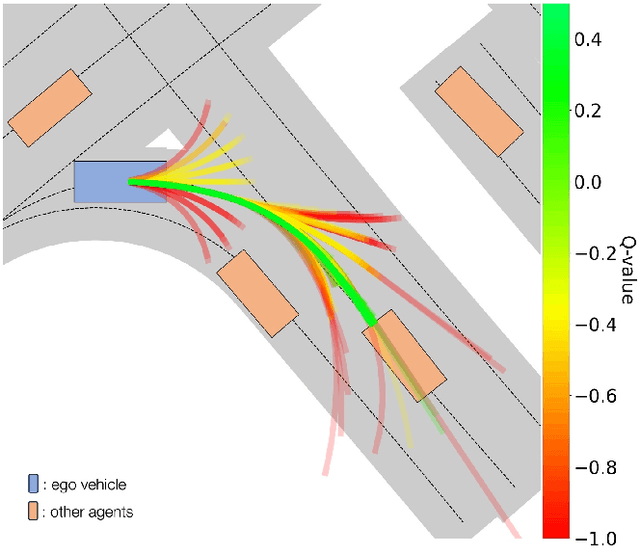


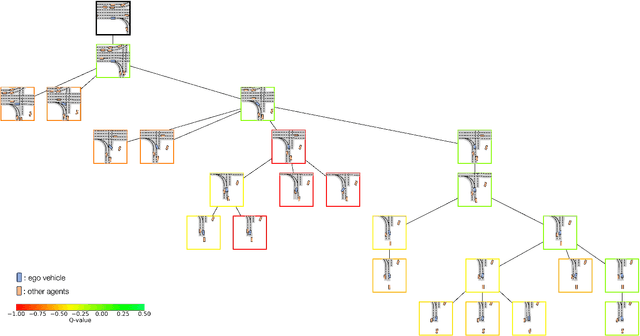
Abstract:We present MBAPPE, a novel approach to motion planning for autonomous driving combining tree search with a partially-learned model of the environment. Leveraging the inherent explainable exploration and optimization capabilities of the Monte-Carlo Search Tree (MCTS), our method addresses complex decision-making in a dynamic environment. We propose a framework that combines MCTS with supervised learning, enabling the autonomous vehicle to effectively navigate through diverse scenarios. Experimental results demonstrate the effectiveness and adaptability of our approach, showcasing improved real-time decision-making and collision avoidance. This paper contributes to the field by providing a robust solution for motion planning in autonomous driving systems, enhancing their explainability and reliability.
TSGN: Temporal Scene Graph Neural Networks with Projected Vectorized Representation for Multi-Agent Motion Prediction
May 14, 2023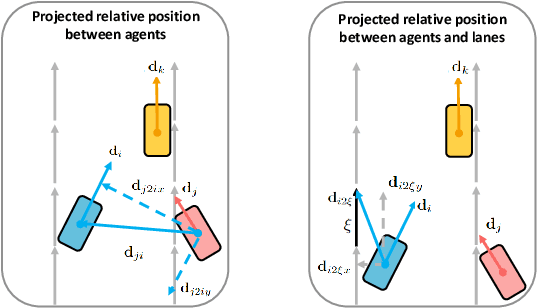
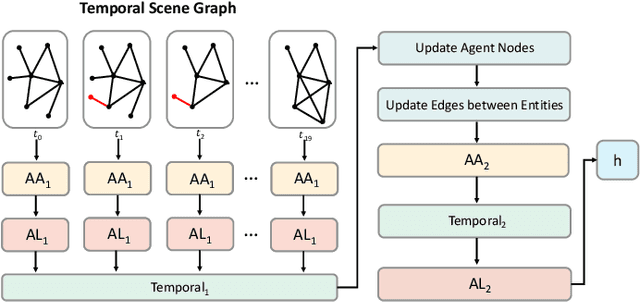

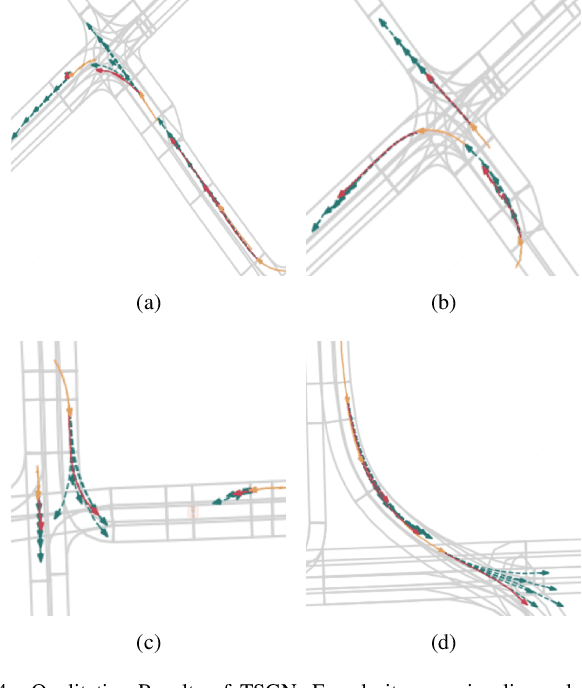
Abstract:Predicting future motions of nearby agents is essential for an autonomous vehicle to take safe and effective actions. In this paper, we propose TSGN, a framework using Temporal Scene Graph Neural Networks with projected vectorized representations for multi-agent trajectory prediction. Projected vectorized representation models the traffic scene as a graph which is constructed by a set of vectors. These vectors represent agents, road network, and their spatial relative relationships. All relative features under this representation are both translationand rotation-invariant. Based on this representation, TSGN captures the spatial-temporal features across agents, road network, interactions among them, and temporal dependencies of temporal traffic scenes. TSGN can predict multimodal future trajectories for all agents simultaneously, plausibly, and accurately. Meanwhile, we propose a Hierarchical Lane Transformer for capturing interactions between agents and road network, which filters the surrounding road network and only keeps the most probable lane segments which could have an impact on the future behavior of the target agent. Without sacrificing the prediction performance, this greatly reduces the computational burden. Experiments show TSGN achieves state-of-the-art performance on the Argoverse motion forecasting benchmar.
The Audio-Visual BatVision Dataset for Research on Sight and Sound
Mar 14, 2023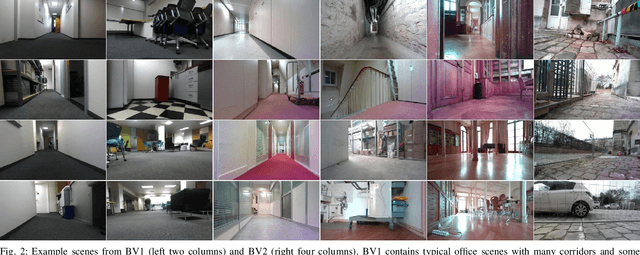
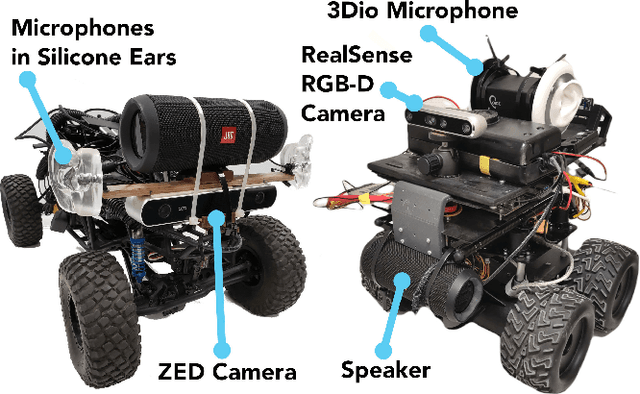
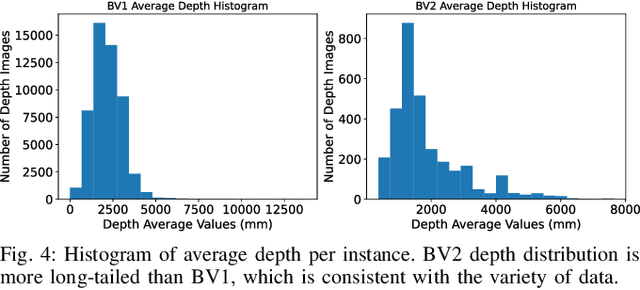

Abstract:Vision research showed remarkable success in understanding our world, propelled by datasets of images and videos. Sensor data from radar, LiDAR and cameras supports research in robotics and autonomous driving for at least a decade. However, while visual sensors may fail in some conditions, sound has recently shown potential to complement sensor data. Simulated room impulse responses (RIR) in 3D apartment-models became a benchmark dataset for the community, fostering a range of audiovisual research. In simulation, depth is predictable from sound, by learning bat-like perception with a neural network. Concurrently, the same was achieved in reality by using RGB-D images and echoes of chirping sounds. Biomimicking bat perception is an exciting new direction but needs dedicated datasets to explore the potential. Therefore, we collected the BatVision dataset to provide large-scale echoes in complex real-world scenes to the community. We equipped a robot with a speaker to emit chirps and a binaural microphone to record their echoes. Synchronized RGB-D images from the same perspective provide visual labels of traversed spaces. We sampled modern US office spaces to historic French university grounds, indoor and outdoor with large architectural variety. This dataset will allow research on robot echolocation, general audio-visual tasks and sound phaenomena unavailable in simulated data. We show promising results for audio-only depth prediction and show how state-of-the-art work developed for simulated data can also succeed on our dataset. The data can be downloaded at https://forms.gle/W6xtshMgoXGZDwsE7
 Add to Chrome
Add to Chrome Add to Firefox
Add to Firefox Add to Edge
Add to Edge